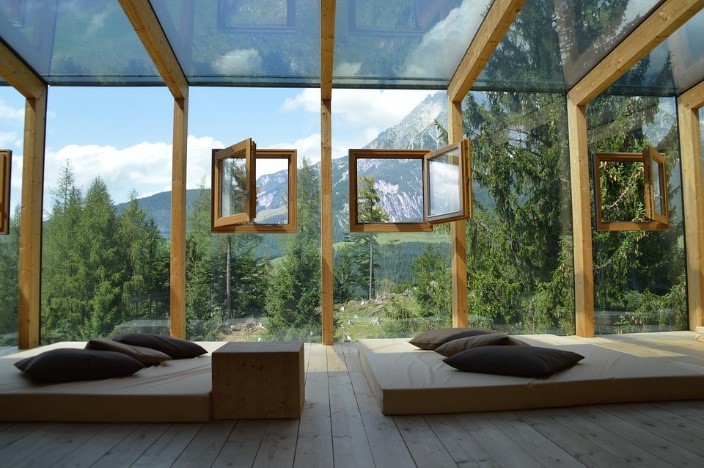
Having proper ventilation in a home is very important to prevent excessive heat problems in the attic that include moisture build-up, wood rot, leaking, and mold growth. In cold climates in the winter, improper ventilation can cause ice dams to form in low areas that result in major roof damage.
One of the most important ways to prevent this damage is to ensure that the soffit area, which is the underside of overhangs and eaves, has proper ventilation. Soffit vents are intakes that allow fresh outside air to be brought into the attic to help hot air flow up and out of the attic in higher-up exhaust vents.
Because hot air naturally rises, it is continually moving from the conditioned space in a house into the attic. The upward movement creates a negative pressure in the attic, requiring additional air to be supplied through the soffits to keep the hot air moving upward through vents to the outside. If soffit vents are blocked or do not exist, the hot air can remain in the attic and create excessive heat and moisture problems.
Excessive heat is one of the symptoms of having blocked soffits, and one rule of thumb is that the attic temperature should not be more than 15 degrees Fahrenheit greater than the conditioned space in the house. Other symptoms include moisture buildup and possible mold growth on the underside of the roof.
In the wintertime, this excessive heat can cause snow on the roof to melt unusually fast. The water can then pool and refreeze into ice on edges and low points of the roof where it is colder. This ice can build up into what is commonly referred to as “ice dams.” These ice dams can trap water next to the roofing shingles, causing leakage and significant water damage. They can also build up around the soffit area, further impeding proper ventilation and compounding the ice dam problem.
Blocked soffit vents are a very common cause of improper ventilation. Often, soffit vents are blocked by improperly installed insulation over the vent area, or the vents may be hindered by appliances such as HVAC equipment or inset lighting from the room below. Another common problem is routing bathroom exhaust into a soffit vent. Because soffit vents are always meant to be intakes of air, having warm, moist exhaust air from a bathroom routed into a soffit vent can be very detrimental to ventilation.
Finally, older homes may not even have soffit vents. In some cases, these houses appear to have soffit vents from the outside due to exterior siding, but this siding has often been placed over hardwood that includes no soffit venting apertures.
To fix soffit ventilation problems, make sure that insulation and other obstacles are removed from soffit vents and that exhaust vents are not erroneously routed into soffit vents. The air flow of the attic can be improved dramatically with these steps, and ice dams, roof damage, and moisture build-up can be easily avoided.
